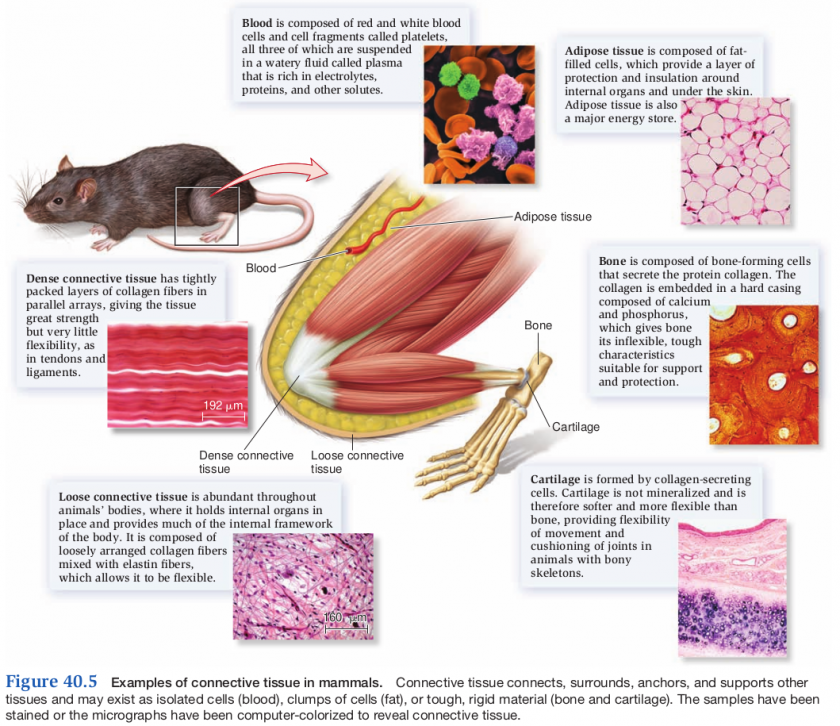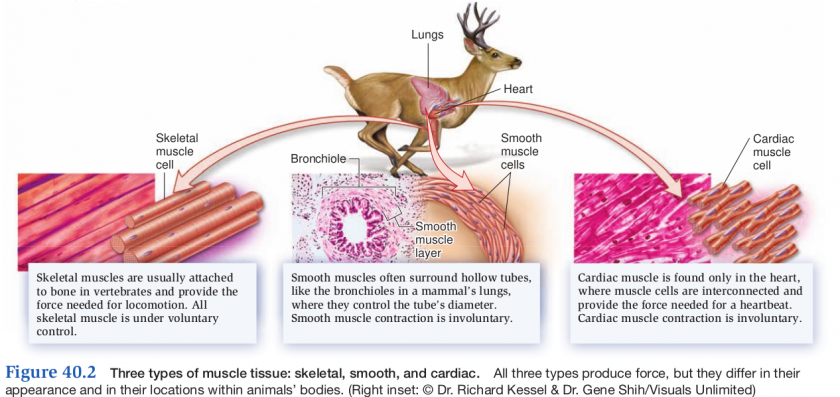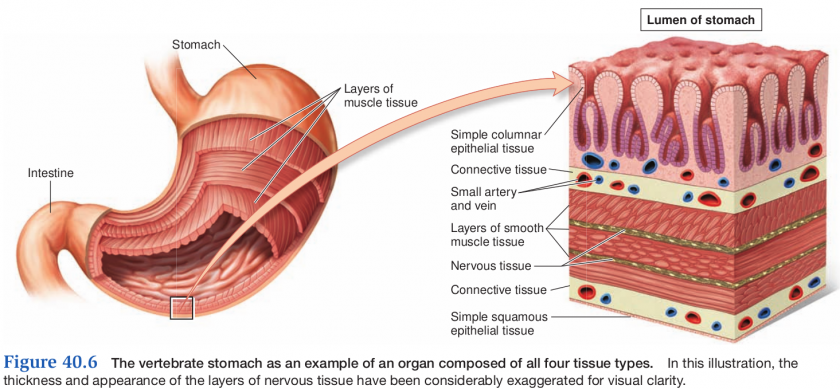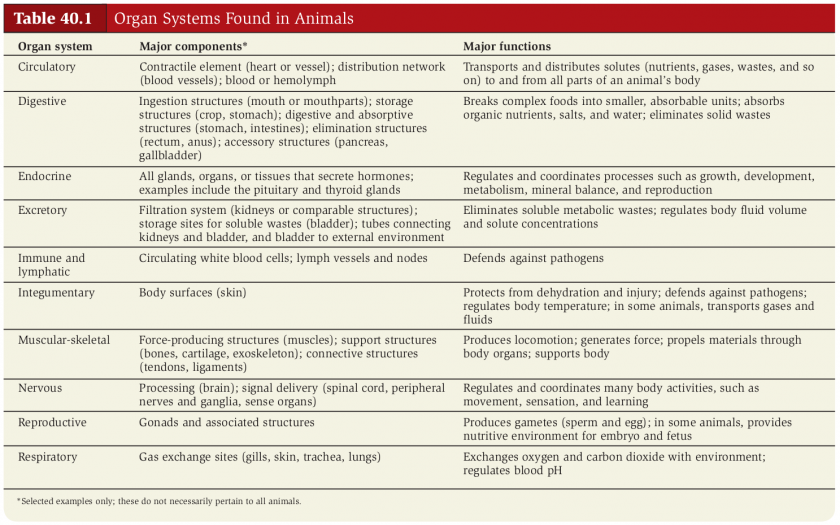Chapter 40
Intro to Animal Structure(Form) & Function
Key concepts
- organization of animal bodies
- the relationship between structure and function
- homeostasis
All Animals:
- Exchange materials with their surroundings
- Obtain energy from organic molecules
- synthesize complex molecules
- reproduce themselves
- detect and respond to signals in their immediate surroundings
Levels of Animal Organization
- Cellular
- Phylum Porifera
- Tissue
- Phylum Cnidaria
- Phylum Ctehotophora
- Organ System
- All advanced animal groups
Internal Organization of Animals
- Cells with similar properties group together to form tissues
- Tissues combine together to form organs
- Organs are linked together to form organ systems
- Organ Systems form an organism
Tissues
Tissue
- An association of many cells that have a similar structure and function
Types
- Epithelial tissue
- Connective tissue
- Muscle tissue
- Nervous tissue
Epithelial
- Sheets of densely-packed cells that:
- cover the body or enclose organs
- line the walls of the body cavity and organs
- Specialized to protect and secrete/absorb ions and organic molecules
- cells have a variety of shapes
- cuboidal
- squamous
- columnar
- arranged to form different types of tissues
- simple
- one layer
- stratified
- multi layer
- pseudo-stratified
- one layer, but appears stratified
- simple
- All are asymmetrical or polarized
- One side rests on the basal lamina (basement membrane)
- the other faces the environment
Types of Epithelial Tissue
- Simple squamous
- one layer of flat cells
- Simple cuboidal
- one layer of square cells
- Simple columnar
- single layer of rectangular cells
- Pseudo-stratified columnar
- 1 cell thick with all at basement barrier
- Stratified squamous
- multi-layered flattened cells
- Transitional
- stretchable tissue
All may be involved with secretions/absorption/protection
Connective tissues
Connect, surround, anchor, bind, & support
- For extracellular matrix (ECM) around cells
- provides scaffolds for attachment
- protects and cushions
- mechanical strength
- transmit information
- transport
Types of Connective tissue
- Blood
- transport and protection
- adipose (fat)
- insulation, protection, support, and storage
- bone
- support, protections, and movement
- cartilage
- support and flexibility
- loose connective tissue
- holds internal organs in place
- dense connective tissue
- strength and support
Muscle Tissues
Cells specialized to contract, generating mechanical force
Types of muscle tissue
- Skeleton muscle
- attached to bone(via connective tissue) or exoskeleton for locomotion
- elongated fibers
- voluntary control
- striated
- Smooth muscle
- surrounds tubes and body cavities for propulsion of contents
- flattened cells
- involuntary control
- cardiac muscle
- only in the heart
- elongated fibers
- involuntary control
- striated
- branched
Nervous tissue
- complex networks of neurons (nerve cells)
- initiate and conduct electrical signals from one part of the body to another
- electrical signals produced in one neuron may stimulate or inhibit other neurons
- initiate new electrical signals
- stimulate muscle cells to contract
- stimulate glandular cells to release chemicals
- also contains neuro-glial cells
- more numerous than neurons
- provide metabolic support, maintenance, ion balance, and cleaning for the neurons
Organ Systems
10 organ systems that we will cover (not in this order)
Structure and function
- organization of structure(form) can predict the function of a structure
- we will concentrate of the increasing complexity of structural(form), and thus the increasing complexity of organismal function
- most emphasis on vertebrates
Homeostasis
- changing variables in environmental:
- air temperature
- water temperature
- food supply
- water supply
- pH
- O2 Concentration
- Process of adjusting to the external environment and maintaining a stable internal environment







